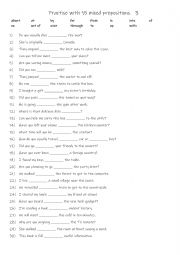
|
A1+-A2 Practise with 15 mixed prepositions 3
First, students need to familiarise themselves with the 15 prepositions and their use. Then they read the sentences to work out which preposition is needed to complete the gap-fill. Each tense is used 2 times! Answers on page 2
Level: elementary
Age: 8-100
Type:
Downloads: 112
|
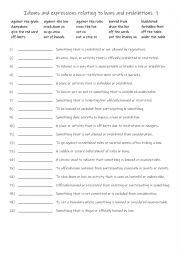
|
B1+-C1 Idioms and expressions relating to bans and prohibitions 1
First, students need to familiarise themselves with the 20 idioms and expressions and their meanings. Then they read the definitions to see which one is being described and write that word in the space provided Answers on page 2.
Level: intermediate
Age: 12-100
Type:
Downloads: 112
|
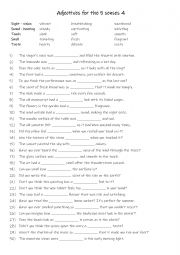
|
A2+-B1 Adjectives for the 5 senses 4
Mastering these adjectives helps students describe experiences, express emotions, and write creatively, fostering richer and more impactful communication. First, students need to familiarise themselves with 15 adjectives and check their meaning and use. Then they read the sentences to see which one is needed to complete the sentence. Answers on pag...
Level: intermediate
Age: 10-100
Type:
Downloads: 112
|
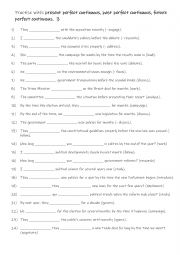
|
B1-B2 Practise with present perfect continuous, past perfect continuous, future perfect continuous. 3
By using these forms, students can enhance their narrative skills, link multiple events, and communicate more flexibly, making their speech and writing more natural, clear, and sophisticated. First, students need to familiarise themselves with the 3 tenses and use. Then they read the sentences to work out which one is needed to complete the gap-fil...
Level: intermediate
Age: 10-100
Type:
Downloads: 112
|
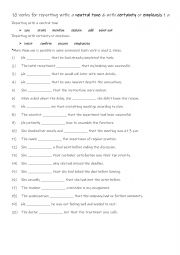
|
10 verbs for reporting with a neutral tone & with certainty or emphasis 1 a
First, students need to familiarise themselves with the 10 verbs and check their meaning and use. Then they read the sentences to see which verb is needed to complete the sentence. Each verb is used 2 times! Answers on page 2
Level: intermediate
Age: 10-100
Type:
Downloads: 112
|
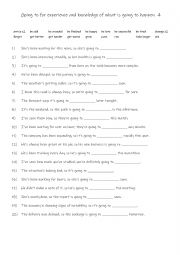
|
Going to for experience and knowledge of what is going to happen 4
First, students need to familiarise themselves with the verbs and their meanings. Then they read the sentences to see which one is required to complete the sentence. Answers on page 2.
Level: elementary
Age: 8-100
Type:
Downloads: 112
|
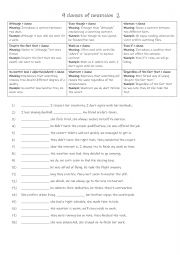
|
9 clauses of concession 2
First, students need to familiarise themselves with the 9 clauses and their meanings. Then they read the sentences to see which one is required to complete the gap-fill. Each clause is used 2 times! Answers on page 2.
Level: intermediate
Age: 11-100
Type:
Downloads: 112
|
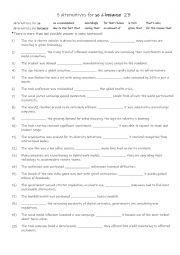
|
5 alternatives for both so & because 2B
First, students need to familiarise themselves with the 10 words and check their meaning and use. Then they read the sentences to see which one is needed to complete the sentence. Each word is used 2 times! Answers on page 2.
Level: intermediate
Age: 10-100
Type:
Downloads: 112
|
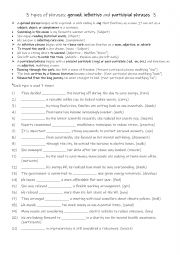
|
B1+-C1 3 types of phrases: gerund, infinitive and participial phrases 3
First, students need to familiarise themselves with the 3 types of phrases and their use. Then they read the sentences to work out which one is needed to complete the gap-fill. Each verb pattern is used 7 times! Answers on page 2.
Level: intermediate
Age: 10-100
Type:
Downloads: 112
|
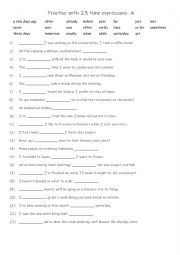
|
A2+-B1 Practise with 23 adverbs of time 4
Recognising these expressions improves listening and reading comprehension, enabling students to grasp stories, instructions, and conversations more effectively. First, students need to familiarise themselves with the 23 time expressions and their use. Then they read the sentences to work out which one is needed to complete the gap-fill. Answers on...
Level: elementary
Age: 10-100
Type:
Downloads: 112
|












